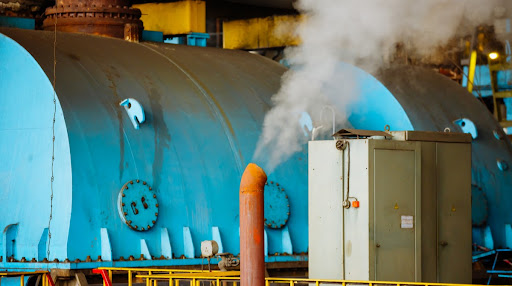
If you have been looking to provide steam for some of your facility’s functions, you have probably come across the terms “steam generators” and “steam boilers.” Steam generators and steam boilers provide mostly identical functions: when it comes down to it, they both produce steam. However, while their purposes are very similar, the right application for each is different. It’s important to know which is right for you - choosing your facility’s equipment correctly helps to ensure that costs are minimized and efficiency is maximized.
How to Choose
Given that both steam generators and steam boilers produce steam, it can often be confusing which is the right choice for a particular application. One of the first questions to ask is: What are your facility’s demands for heating? Does your facility have steam needs (such as heating and production) throughout the facility, or is it mainly one piece of equipment? Will the steam be needed continuously or only for short periods of time?
Before deciding on the type of equipment your facility needs, spend time understanding what your facility’s needs are and what they might be in the future. Are facility expansions coming up that may need steam as well? That solid understanding will help you make the correct equipment selection. Here are some of the biggest pros of each type of equipment.
Steam Generators
Steam generators are typically smaller in size than a steam boiler. Due to their more compact nature, steam generators make a great candidate for intermittent and temporary steam needs.
Steam generators save energy because they have faster warm-up times and lower heat losses, only generating the amount of steam an application needs.
Applications where steam generators excel typically have the following characteristics:
- Steam loads are not constant
- Steam is only needed by a few pieces of equipment
- Steam may only be needed for a short period of time
- Space is limited
If your application sounds like it fits these parameters, a steam generator may make more sense for your facility.
Steam Boilers
Steam boilers are typically much larger in size than steam generators. Often installed in mechanical rooms, steam boilers require piping for fuel and an exhaust stack to move the combustion fumes outside of the mechanical room. Steam boilers often feed an entire network of steam pipes, so these will need to be connected to the boiler too.
Steam boilers gain efficiency from their size. The two main types of steam boilers, waterside tubes and fireside tubes, are both able to transfer heat to the water in a more efficient and complete manner. Despite this benefit, steam boilers have giant vessels of water that they must boil into steam. Starting up a boiler can take hours or days, and the boiler must continue heating even as the facility’s steam demands go down.
Here are some of the main applications where steam boilers are extremely useful:
- Steam is constantly needed
- Large amounts of steam are needed
- Space is not an issue
- Efficiency is important
With this brief overview, you can more confidently select the type of equipment your facility needs. When in doubt, contact the experts at Tate for assistance in selecting and sizing the right equipment for your facility.
